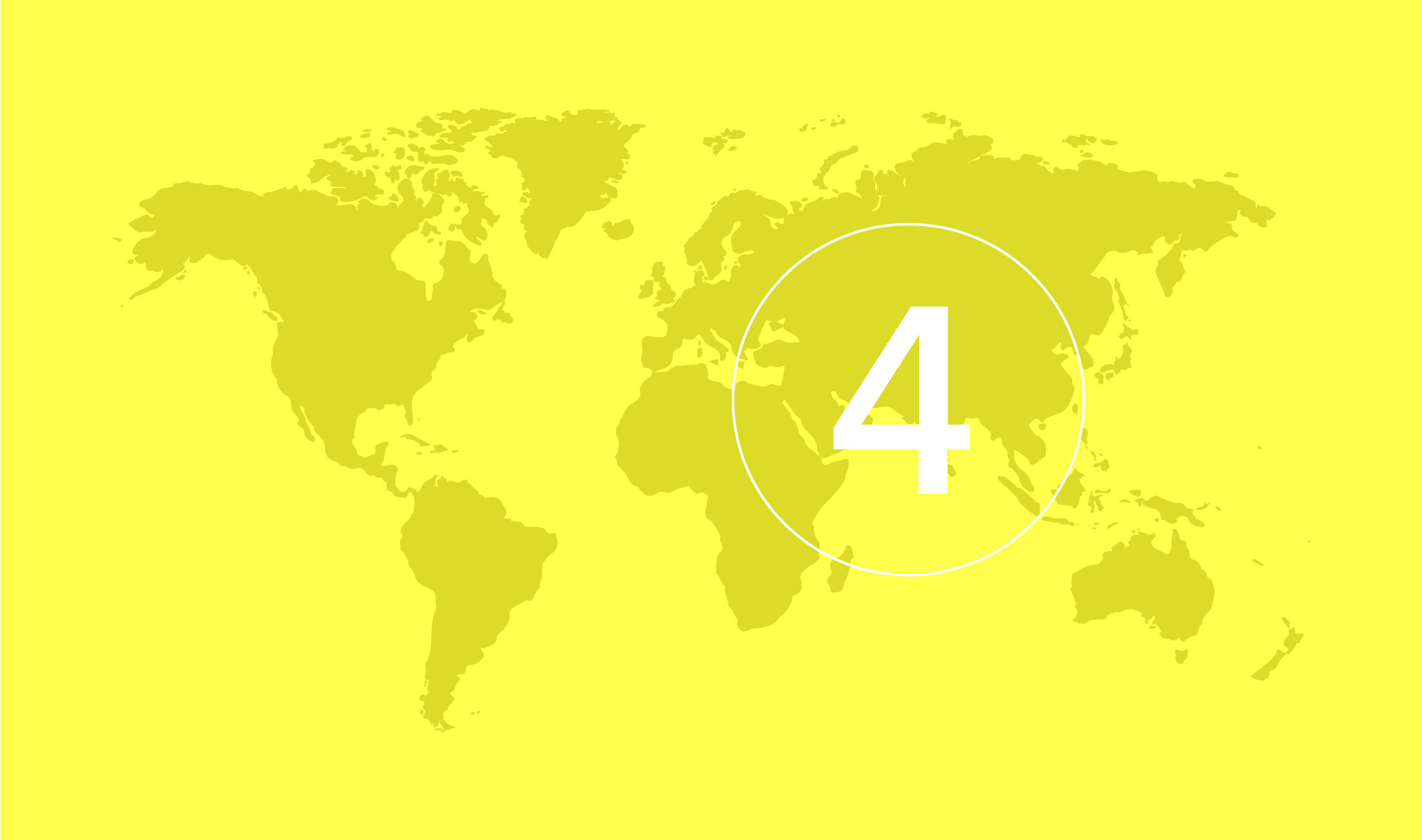
Colombia
Category
4 of 7
| Risk type | Short | Long |
|---|---|---|
| Sovereign | ||
| Public | ||
| Bank | ||
| Corporate |
The icons indicate EKN's risk assessment.
A lower country risk category means a lower country risk. The icons mark EKN's ability to cover risks to different buyers in the country.
-
No policy established
- EKN has not analysed this country recently and therefore has no current opinion. If an exporter submits an application for such a country, EKN performs an analysis of the country at short notice and determines a policy.
-
Normal risk assessment
- EKN decides on guarantee issue based on an assessment of risk in the transaction. There are no predefined restrictions in the risk assessment or assumptions for risk assessment.
-
Restrictive risk assessment
- EKN sets stricter requirements in the risk assessment in order to guarantee a transaction. EKN may have specified special criteria that are key to the risk assessment of the guarantee holder category in question. This may mean that EKN sets a requirement that the counter party must have its own hard currency earnings or that external support can be expected, or that EKN sets a requirement for a letter of credit, government or bank guarantee. If the formulation of the transaction deviates from a defined restriction, we normally set more stringent conditions and may in the worst case refuse to guarantee the transaction. More stringent conditions may be that we reduce the sum guaranteed, raise the premium or require some form of security.
-
Normally off cover
- Here EKN does not normally cover currency transfer risks. However in some circumstances EKN may be able to go further with high risk countries than the restrictions of the country policy indicate. The application is then tested under the so-called GSL facility, which refers to guarantee issue with special country evaluation. There are specific requirements for this, primarily that the exporter has experience of the market in question. The risk is then shared with the exporter and by means of a mark-up on the premium.
-
OECD or EU countries
- Because of EU rules, EKN cannot issue guarantees for transactions with a risk period of less than two years for exports to Australia, EU countries, Iceland, Japan, Canada, Norway, New Zealand, Switzerland or the USA. If you have any questions, please telephone us on +46 8-788 00 00.
Country risk analysis
Country Risk Analysis of Colombia
The latest Country Risk Analysis of Colombia was issued in October 2025.
A dynamic democracy
Colombia is the fourth largest economy in Latin America in terms of nominal GDP (USD 419 billion) and the third largest by population (53 million inhabitants). The country is an established democracy with stable institutions, an independent judiciary, and a long history of peaceful transfers of power.
Colombia has a presidential system with four-year terms and a constitution based on the separation of powers and a system of checks and balances between the executive (the government), the legislative (the congress), and the judiciary (the Supreme Court).
Historically, political power has alternated between two parties: the Conservative Party (Partido Conservador Colombiano, PCC) and the Liberal Party (Partido Liberal Colombiano, PLC). When Gustavo Petro took office in 2022, the country for the first time elected a president from the left of the political spectrum. Economic activity in Colombia has been more dynamic than in the rest of the region over the past decade, although dependence on commodities for export revenues remains a long-term structural challenge.
Colombia’s GDP has grown by an average of 2.7 per cent per year between 2015 and 2024, compared with an average of 1.3 per cent for Latin America during the same period. The economy encompasses a broad range of activities, ranging from agriculture and raw materials to mining, manufacturing, services to tourism.
The services sector accounts for around 60 per cent of GDP, while manufacturing represents just over 10 per cent. At the same time, Colombia’s economy is exposed to price fluctuations in international commodity markets as well as to climate-related transition risks. This is due to the fact that nearly half of the country’s export earnings come from gas and oil. In addition, agricultural products such as coffee and bananas are exported – goods that are also subject to volatile world market prices and physical climate risks.
There are, however, several factors that act as buffers against external shocks and help maintain macroeconomic stability. The floating exchange-rate regime serves as a shock absorber against potential commodity price declines; the foreign exchange reserve is adequate, covering more than seven months of imports; and inflows of foreign direct investment offset current account deficits.
Colombia also has a long tradition of borrowing on international capital markets, where access to funding has generally been good, although risk premia have risen in recent years. The central bank operates independently, and the Colombian banking system is sound, albeit small relative to the size of the economy – partly because the informal sector still represents a large share of overall economic activity.
Despite long-term progress towards peace and a gradual strengthening of institutional capacity, Colombia continues to face significant security challenges. The peace agreement between the government and the largest guerrilla group, FARC, signed in 2016, marked the end of more than fifty years of civil conflict. Nevertheless, the country has not achieved complete peace.
In many areas previously controlled by FARC, new armed groups have taken over drug trafficking and other criminal activities. Negotiations with the last remaining guerrilla organisation, ELN, have been ongoing for several years but have been completely suspended since 2024. In recent years, armed violence has increased, with clashes both between rival gangs and between gangs and the state’s security forces.
Fiscal challenges
General elections, including the presidential election, will take place in May 2026. According to the constitution, a president may serve only one term, which means that Gustavo Petro cannot stand for re-election. The political landscape is fragmented, and it remains too early to tell who the leading candidates will be. Regardless of the outcome, the next government will face several key challenges – fiscal policy, the healthcare system, and security.
Fiscal risks have increased in recent years, albeit from a strong starting position. Colombia has long enjoyed a reputation as one of the region’s most fiscally responsible countries and has never defaulted on its payments, a record that has helped maintain good relations with creditors and reliable access to capital markets.
However, recent credit-rating downgrades signal a weakening trend. The fiscal deficit has grown, and in 2025 the government activated an escape clause in the fiscal rule until 2027, allowing larger deficits than the rule would normally permit. At the same time, congress has passed a decentralisation reform that over time increases state transfers to municipalities and risks putting significant pressure on the budget unless responsibilities are adjusted accordingly.
Colombia has lost its investment-grade status with two of the three major credit-rating agencies, and in 2025 the country’s access to the IMF’s flexible credit line expired. This has dampened investor confidence, although markets partly expect a return to stricter fiscal policy after the election. The risks are mitigated by the fact that public debt remains moderate – around 60 per cent of GDP – and by the country’s long tradition of tax reforms.
The baseline scenario is that the debt ratio will rise to around 65 per cent of GDP by 2027 and then stabilise. The outlook will largely depend on the extent to which the next government succeeds in restoring confidence through clear signals of consolidation and a credible plan for sustainable public finances.
Beyond fiscal challenges, structural problems persist in the healthcare system, and the security situation remains fragile. The healthcare system is under financial strain, with indebted insurance companies and growing payment delays to healthcare providers. The government has announced a reform that would increase the public sector’s role, but strong opposition makes implementation uncertain.
The security situation has also deteriorated in recent years, particularly in areas where the state has a weak presence. Negotiations with the ELN guerrilla movement have been suspended, and some criminal networks have strengthened their positions in the power vacuums left by FARC, although the situation varies between regions.
Despite these challenges, Colombia has shown considerable economic resilience. Key indicators for growth, inflation, savings and investment point to gradual improvement, demonstrating the economy’s ability to recover from shocks – as it did after both the commodity price slump of 2014–2015 and the global pandemic. The stability of the private sector, the flexible exchange rate and a well-capitalised banking sector provide the country with solid foundations for maintaining macroeconomic stability.
Business environment
Access to financial information for private buyers is generally good. Imports on open account are common, and EKN’s experiences have been positive. As regards the overall regulatory environment, Colombian public administration is, on the one hand, characterised by a high degree of reliability – particularly within the Ministry of Finance, the central bank and their affiliated authorities.
On the other hand, local public administration, including municipal authorities and companies, carries a higher risk of political interference and corruption. It can also be complicated to realise collateral; for example, foreclosures must be conducted through auction sales, which can make such procedures both timeconsuming and costly.
According to the World Bank’s Governance Indicators – a set of metrics measuring, among other things, corruption levels, regulatory quality, political stability and the rule of law – Colombia’s overall performance has remained relatively stable over the past decade.
The Colombian banking sector is dominated mainly by domestic banks, which account for around two-thirds of total assets. Moreover, the sector is largely privately owned, a legacy of the privatisation of state-owned banks following the major banking crisis of the late 1990s. The regulatory framework for banking is relatively well developed, although there is still room for improvement, for instance regarding capital adequacy requirements and the definition of core capital.
The government is also considered reliable in terms of its willingness and capacity to support banks in distress. This was demonstrated most recently during the pandemic, when the central bank maintained liquidity levels in the financial system and supported continued lending to the SME sector.
After peaking in 2023, the share of non-performing loans in the banking system declined to around 4.4 per cent in May 2025, mainly driven by improvements in household loan portfolios. Overall, the financial sector remains sound and liquid, with adequate capitalisation levels.
EKN’s business assessment also takes into account the risk of negative impacts on human rights. EKN focuses on the potential impact of the activities in which the exported goods will be used. In this context, issues such as working conditions, child and forced labour, excessive use of force by security personnel, indigenous rights and land rights are of great importance.
In Colombia, the risk of human rights violations relevant to business activity is higher than in OECD high-income countries but broadly in line with the levels found in upper-middle-income countries. The risk level relating to access to remedy in projects is somewhat lower than for other indicators, while the risk of violations of land and indigenous rights is somewhat higher.
EKN’s policy
EKN has classified Colombia in country risk category 4 (on a scale from 0 to 7) since 2006. Normal risk assessment applies to transactions with the Ministry of Finance, other public buyers, banks, and companies. This means that there are no pre-determined restrictions on the issuance of guarantees and that transactions are assessed on their own merits, without special requirements or conditions.
EKN’s commitment and experience
Colombia is one of EKN’s larger markets in Latin America. The guarantees are mainly concentrated in urban bus projects in some of the country’s major cities and in the transport sector more broadly. In addition, there is exposure to a major power project. The remaining commitments stem from the mining sector, the healthcare sector, and the pulp and paper industry.
Over the past five years, EKN has issued guarantees for an average of just over 30 transactions per year. Overall, the payment record is good, although delays in transactions involving municipal buyers have occurred historically.
Learn more about exporting to Colombia

- Financing
- Guarantees
- Markets
EKN backs financing of Bus Rapid Transit system in Bogota
Efficient public transport is instrumental to sustainable urbanization. The concept of Bus Rapid Transit (BRT) has been particularly successful in Latin America, where Volvo has been contracted to deliver 700 purpose-built buses to Colombia’s capital Bogotá in one of the largest-ever bus deals in Latin America. Local-currency financing backed by EKN made it possible.
EKN backs financing of Bus Rapid Transit system in BogotaMore for companies that want to export to Colombia

EKN's guarantees
EKN's guarantees reduce the risk of payment defaults and help banks support businesses. Which guarantee suits your needs?
EKN's guarantees
Guarantee guide
Are you unsure which guarantee is the best fit for your specific transaction? Try our guarantee guide.
Guarantee guide